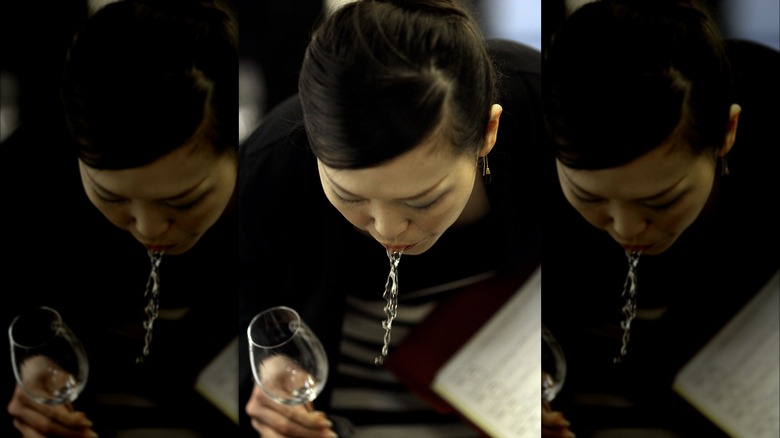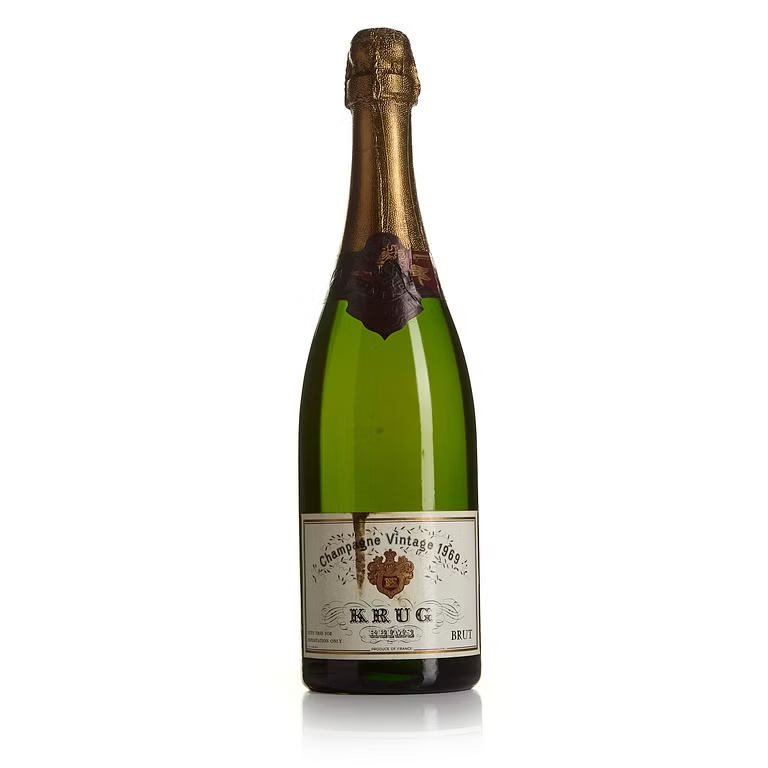Here is a comprehensive guide to the art of spitting wine, written by TheChampagneSommelier. [ read the full champagne story ]
Estimated reading time: 5 minutes

My friends, let us speak of a topic that, to the uninitiated, may seem barbaric, ungrateful, or even offensive. I am speaking of the professional wine taster’s most important tool, a skill that separates the enthusiast from the expert.
I am speaking, of course, of the art of spitting wine.
I can already sense some of you gasping. “Spit it out? A Grand Cru? A vintage Champagne that has rested 10 years on its lees? What sacrilege!”
Calm yourselves, I beg you. Let us immediately dispel the myth that this is wasteful. On the contrary. Spitting is the ultimate act of respect—not just for your own well-being, but for every single wine you taste. Mastering this is crucial to being able to analyze, appreciate, and understand wine on a higher level. Today, I will teach you how to do it with style, precision, and confidence.
Part 1: Why on Earth Should One Spit?
First, the fundamental question: Why?
The answer is simple and twofold: Stamina and Sobriety.
- Palate Stamina: Your tongue and palate are your instruments. Alcohol and tannins, in large quantities, are numbing. If you swallow every wine at a large tasting (say, 10-15 wines), your palate will become tired, dull, and increasingly incapable of perceiving subtle nuances. By spitting, you keep your palate fresh, alert, and receptive.
- Analytical Sharpness (Sobriety): This is the most important point. Our job is to analyze the wine, not to become intoxicated by it. When I am in Champagne to taste through hundreds of base wines, or at an En Primeur tasting in Bordeaux, swallowing is an impossibility. After just five or six wines, the alcohol begins to affect your judgment. Your notes become sloppier, your analysis less sharp.
Professional Insight: You have already “tasted” the wine. All the information—aroma, texture, acidity, tannins, fruit, and minerality—has been collected. Swallowing the wine adds nothing to your analysis; it only adds to your blood alcohol level. You will perceive the “finish” or aftertaste regardless of whether you swallow or spit.
Part 2: The Technique – Spitting Like a Master
Spitting wine is not like spitting chewing gum. It is not an aggressive “hark.” It is a controlled, quiet, and effective maneuver. Let’s break it down, step by step.
Step 1: The Tasting (Taste First)
Take a moderate sip of wine into your mouth. Not too large, not too small. Let the wine “paint” your entire palate. Swish it around, aerate it gently (that gurgling “intake” sound) to release all the aromas. Assess the texture, acidity, and tannins. Make your analysis.
Step 2: The Gather (Collect the Wine)
When you have finished your analysis, use your tongue to collect all the wine into a single “ball” at the very front of your mouth, just behind your teeth and lips.
Step 3: The Form (Shape Your Lips)
Now for the critical part. You should not tense your cheeks. Instead, form your lips into a small, firm “O,” as if you were about to whistle or say “Phew.” This is the key to a controlled stream.
Step 4: The Execution (The Controlled Stream)
This is a projectile, not an explosion. Use your tongue and a slight contraction of your cheeks to push the wine out in a tight, fast stream. It should not be a wide “shower” that splashes, but a focused stream that hits its target. Think “laser,” not “shotgun.”
- Wrong: Simply opening your mouth and letting it dribble out (messy).
- Wrong: Hocking and spitting from the throat (unacceptable and loud).
- Right: A fast, quiet, and controlled stream from the front of the mouth.
Part 3: Practice Makes Perfect (Train in Secret)
You will not nail this on your first try at a fine dinner. Spitting with confidence requires practice.
- The Best Place to Practice: The shower.
- The Best Medium to Practice With: Water.
Stand in the shower or in front of your sink. Take a sip of water and try to create that tight, controlled stream. Practice hitting a small target (e.g., the drain). Water is actually more difficult than wine, as it is thinner and splashes more easily. When you can spit water in a tight stream, you are ready for wine.
Part 4: The Etiquette – Doing it With Style
The technique is one thing, but being a professional is about etiquette. Spitting discreetly is an art.
- Always Have a Napkin. Before you spit, have a napkin ready in your free hand. Immediately after spitting, discreetly bring the napkin to your mouth to wipe away any drops. No one wants to see wine residue around your mouth.
- The Spittoon is Your Friend. At professional tastings, there is always a “spittoon.” It may be a large, communal one on the floor, or a small cup on your table. That is where you spit. Never in an ice bucket where bottles are chilling, never back into your glass, and definitely never on the floor.
- Lean In. Don’t be afraid of the spittoon. Lean forward, relatively close, so your stream has a short distance to travel. This minimizes splashing, both on yourself and your neighbor.
- Look Down. Look into the spittoon as you spit. This helps you aim and ensures you don’t splash your clothes.
- Be Discreet. Try to do it as quietly as possible. It is a tool, not a performance.
Final Thoughts
Spitting wine is not rude. It is a sign that you are a serious taster. It shows that you are there to analyze and appreciate the craft in many wines, not just to drink one.
So, my friends, practice at home. Go to tastings. And do not be afraid to use the spittoon. It is the first, great step toward truly understanding the complex world of wine with a clear and sober mind.
Cheers—and spit with confidence!






